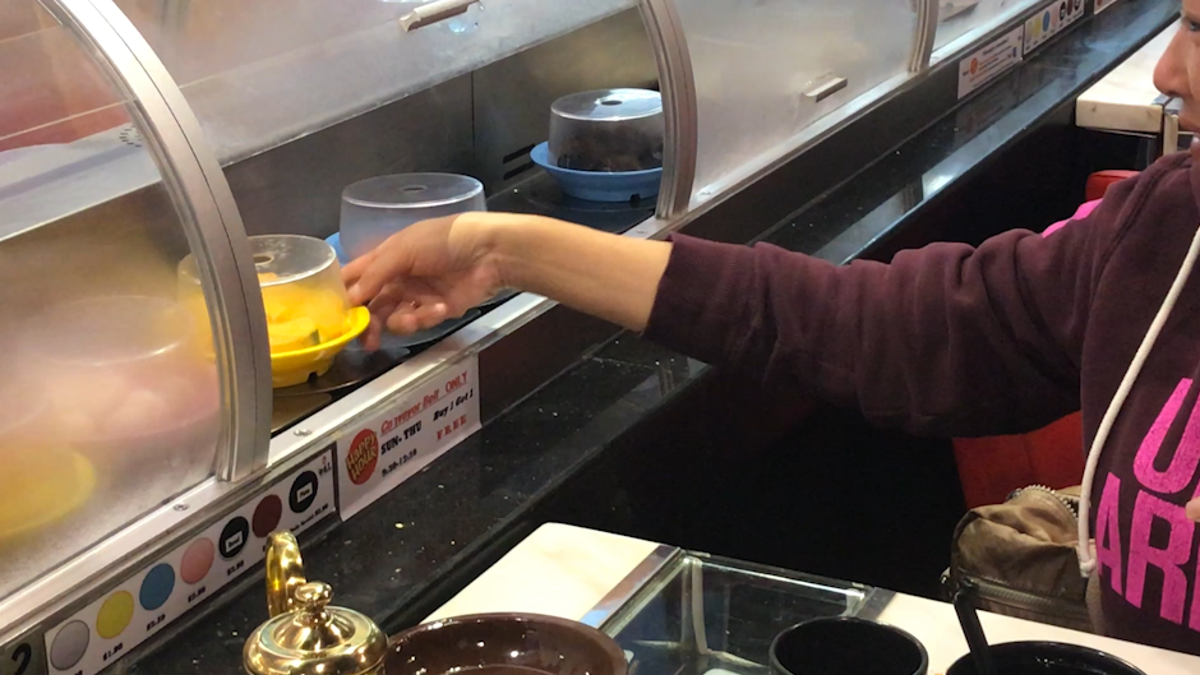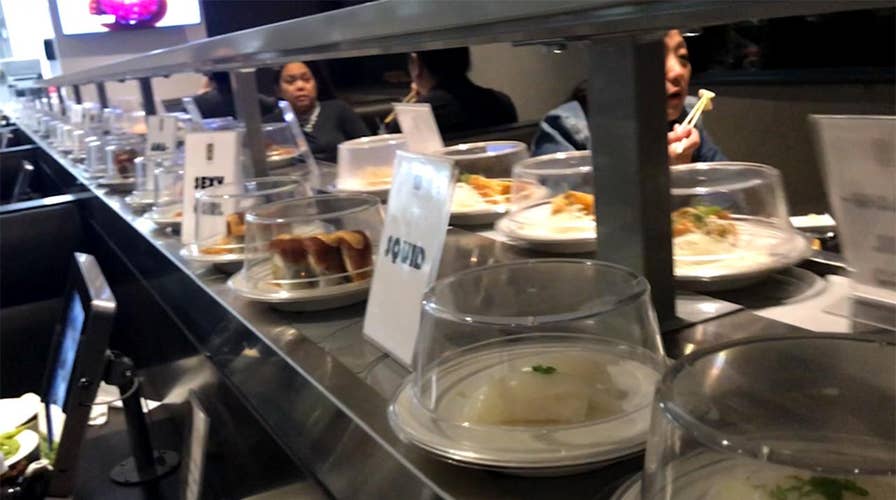Conveyor belt restaurants rotating food nationwide
Food that rotates on display for quick and easy access could diminish the waiter's role.
From Ford’s assembly line to Amazon’s warehouse circulatory package system, the conveyor belt has numerous economic uses. And now, the ingenious device is delivering sushi to a restaurant table near you.
All across the country, a concept developed in Osaka in the 1950s is now taking the states by storm. Conveyor-belt restaurants have opened in cities around the nation, from New York to Denver to Los Angeles.
PIC: CEILING COLLAPSES AT INDIAN RESTAURANT, TRAPS PANICKING DINERS UNDERNEATH
The trend has been catching on especially fast in Sin City. Deep in the heart of Las Vegas’ Chinatown district, a number of Asian automated dining experiences have opened in the last few months, honing in on a culinary tradition that is unique to Japan. Six such food outposts will be open by the end of the year.
“I have this whole theory about Las Vegas that everything has to have an entertainment component to it. You’re vying for locals, you’re vying for tourist dollars, and I think this is a great story for you to go home with. You can tell your friends, ‘We were at this crazy restaurant where we picked up all these dishes off a conveyor belt and it was so much fun,’” said Susan Stapleton, a local food industry expert and editor of Vegas.Eater.com.

Diners decide which sushi to take off the rotating belt at Sapporo in Las Vegas (Fox News)
Historically, most conveyor belts diners choose from rotating sushi. But one restaurant, Chubby Cattle, offers customers a plethora of items to pick off the belt. Diners have the option of taking the Mongolian-Tibetan-Chinese-inspired samplings and cooking them in the hot pot at their table. The restaurant also boasted the first conveyor belt food delivery system in Vegas.
The belt is covered and refrigerated. Patrons then open up the glass case and reach out to grab what they think looks appetizing: mushrooms, onions, shrimp, carrots, noodles, you name it. Food plates have a plastic-like Tupperware casing, and each item is priced based on the color of the bowl.
But workers at Chubby Cattle realize some people might not understand the concept at first.
“A lot of people come in and they have no idea what to do, and I usually tell them,” said Deni Lauwardy, a waiter at Chubby Cattle.
Pressure mounts on the kitchen staff to keep the belt stocked with different food items. It all depends on how many customers are in the restaurant at one time in order to keep the food fresh. A perfect equilibrium is desirable of customer-to-plate ratio.
“Everything is happening very fast in here. If we don’t expedite the food quickly, a customer will have to wait for the soup or the meat.”

A customer reaches for carrots off the refrigerated conveyor belt at Chubby Cattle in Las Vegas (Fox News)
As the waiter-customer interpersonal bond breaks down with automated restaurants such as these, some customers are skeptical the idea can take root outside of Asian-specific joints.
“I don’t think the American population has caught on to this at all. I don’t think they’re aware of this and how easy it can be. I think other restaurants are even going further where a lot of the service has become more automated. Americans right now still want the human,” said customer Gil Watts.
RESTAURANT MANAGER COMES TO WOMAN'S HOUSE AFTER 'MEDIOCRE' YELP REVIEW
Whether or not the food comes from a human or you grab it yourself, customers still want it instantly. Not quite fast food — since you rarely leave with your order as a to-go option — but diners do seem to want to be able to just select a dish and put it on their table.
Some diners also like its uniqueness.
“It’s just a different way to experience the food,” Stapleton said. "A lot more visual than it would be just ordering off a menu.”

